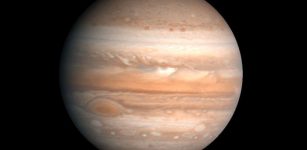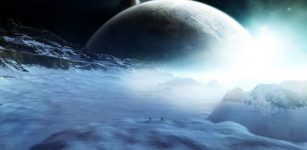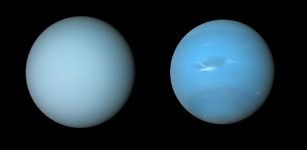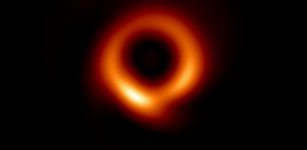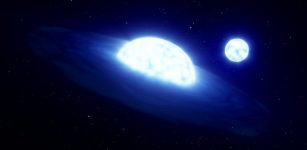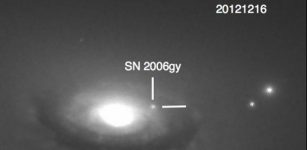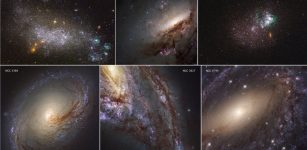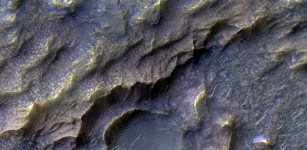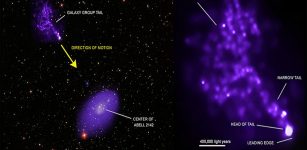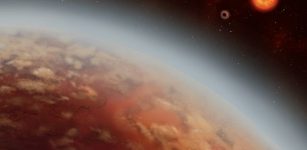Measuring Of Universe’s Expansion – New Method
Eddie Gonzales Jr. – MessageToEagle.com – The aftermath of the collision of two neutron stars that produced gravitational waves detected in 2017, was studied by astronomers using radio telescopes.
They have demonstrated how a combination of gravitational-wave and radio observations, along with theoretical modeling, can turn the mergers of pairs of neutron stars into a “cosmic ruler” capable of measuring the expansion of the Universe and resolving an outstanding question over its rate.
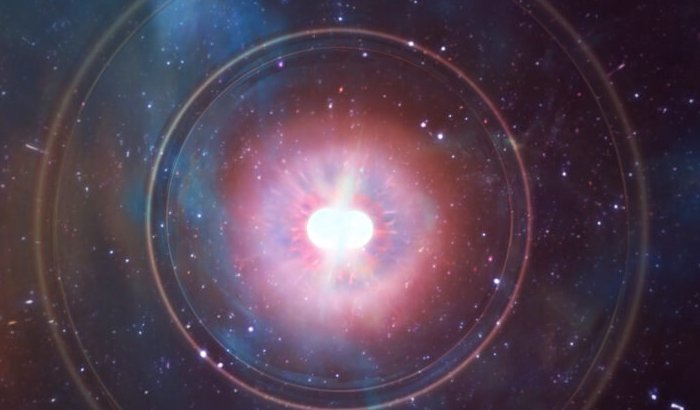 Artist’s impression of the explosion and burst of gravitational waves emitted when a pair of superdense neutron stars collide. New observations with radio telescopes show that such events can be used to measure the expansion rate of the Universe. Credit: NRAO/AUI/NSF
Artist’s impression of the explosion and burst of gravitational waves emitted when a pair of superdense neutron stars collide. New observations with radio telescopes show that such events can be used to measure the expansion rate of the Universe. Credit: NRAO/AUI/NSF
Astronomers could obtain a new way to measure the expansion rate of the Universe, known by scientists as the Hubble Constant that can be used to determine its size and age, as well as serve as an essential tool for interpreting observations of objects elsewhere in the Universe.
Two leading methods of determining the Hubble Constant use the characteristics of the Cosmic Microwave Background, the leftover radiation from the Big Bang, or a specific type of supernova explosions, called Type Ia, in the distant Universe.
However, these two methods give different results.
“The neutron star merger gives us a new way of measuring the Hubble Constant, and hopefully of resolving the problem,” Kunal Mooley, of the National Radio Astronomy Observatory (NRAO) and Caltech, said in a press release.
The technique is similar to that using the supernova explosions. Type Ia supernova explosions have an intrinsic brightness which can be calculated based on the speed at which they brighten and then fade away. Measuring the brightness as seen from Earth then tells the distance to the supernova explosion. Measuring the Doppler shift of the light from the supernova’s host galaxy indicates the speed at which the galaxy is receding from Earth. The speed divided by the distance yields the Hubble Constant.
When two massive neutron stars collide, they produce an explosion and a burst of gravitational waves. The shape of the gravitational-wave signal tells scientists how “bright” that burst of gravitational waves was. Measuring the “brightness,” or intensity of the gravitational waves as received at Earth can yield the distance.
“This is a completely independent means of measurement that we hope can clarify what the true value of the Hubble Constant is,” Mooley said.
However, the intensity of the gravitational waves varies with their orientation with respect to the orbital plane of the two neutron stars, so the team used the radio telescopes to measure the movement of a superfast jet of material ejected from the explosion.
“We used these measurements along with detailed hydrodynamical simulations to determine the orientation angle, thus allowing use of the gravitational waves to determine the distance,” said Ehud Nakar from Tel Aviv University.
This single measurement, of an event some 130 million light-years from Earth, is not yet sufficient to resolve the uncertainty, the scientists said, but the technique now can be applied to future neutron-star mergers detected with gravitational waves.
Written by Eddie Gonzales Jr. – MessageToEagle.com Staff

